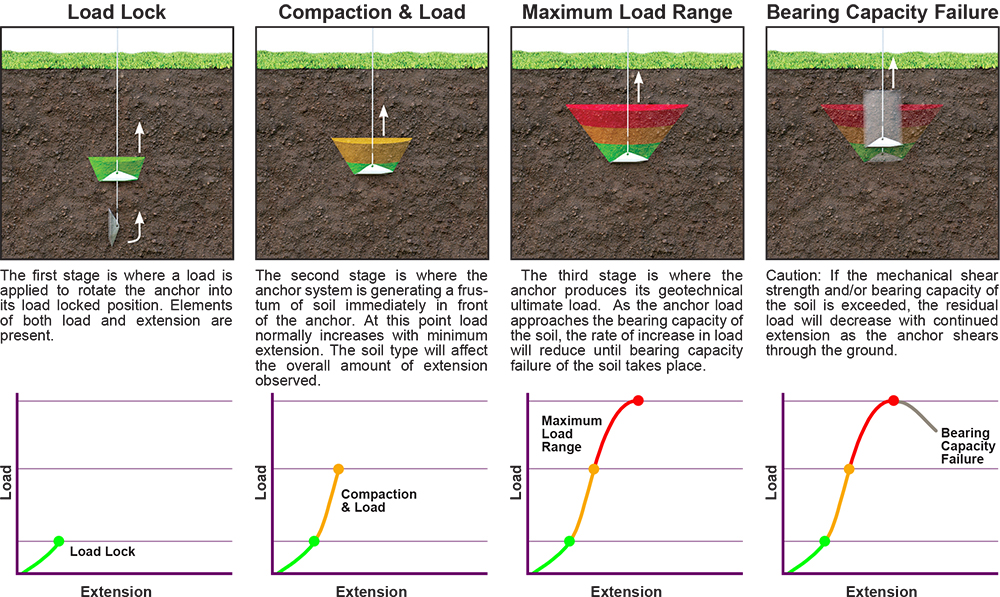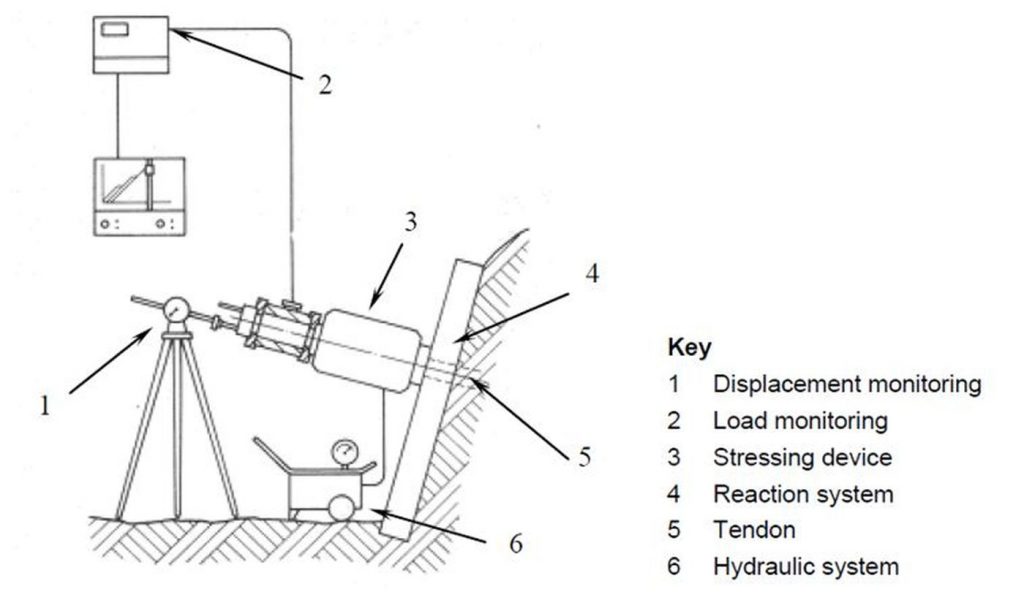How Sturdy Earth Anchors Job: A Comprehensive Guide to Dirt Anchoring Solutions
Durable Earth anchors play an important duty in giving security and support in numerous building applications. By installing deeply into the ground, they stand up to side and vertical forces successfully. Different kinds of anchors deal with various soil problems, making them versatile. Understanding their mechanics and setup methods is essential for making the most of performance. What aspects influence their performance, and just how do they contrast to typical techniques? The responses may shock you.
Recognizing Heavy-Duty Earth Anchors
Heavy-duty Earth supports offer as essential components in different building and landscaping jobs, supplying stability and assistance in tough dirt conditions. These supports function by being embedded into the ground, where they resist side and upright pressures. Their style enables safe and secure accessory to structures, ensuring they remain secured against soil movement or external loads.The efficiency of durable Earth anchors mainly relies on the sort of soil and the anchor's installation depth. Correct installation methods are essential, as they determine the anchor's holding capacity. Ecological factors, such as wetness and freeze-thaw cycles, can also affect performance.These supports are often used in applications varying from securing fencings and retaining wall surfaces to supporting temporary frameworks during damaging climate problems. Understanding the principles behind durable Earth supports is crucial for specialists looking for to improve the durability and security of their jobs.
Kinds Of Heavy-Duty Earth Anchors
Numerous kinds of sturdy Earth supports are made to fulfill details demands based on dirt problems and project needs. Helical supports, including screw-like blades, work in softer dirts, supplying high lots capabilities and very easy installation. Driven supports, which are hammered right into the ground, appropriate for rocky terrains and give instant lots support. Tie-back anchors are generally made use of in retaining wall surface applications, enabling for lateral assistance by securing right into the ground at an angle. An additional kind is the cast-in-place anchor, ideal for concrete applications, as they are integrated into structures for improved security. Finally, soil screw supports are flexible alternatives that can be made use of in various soil kinds, providing reputable tension and compression capabilities. Each type serves distinctive applications, making certain stability and safety and security in building and construction and landscape design jobs. Recognizing these options permits educated choices in selecting the appropriate Earth securing solution.
The Mechanics of Soil Anchoring

Recognizing the auto mechanics of soil anchoring calls for an assessment of various kinds of Earth supports and their installment methods. Each anchor kind offers distinct features that influence its efficiency in various dirt conditions. Proper installation approaches are important for maximizing the securing system's stability and performance.
Sorts Of Earth Anchors
Earth supports, important elements in dirt anchoring systems, come in numerous types, each designed for particular applications and dirt conditions. One of the most common kinds include screw supports, which are twisted right into the ground, supplying strong side resistance. Helical anchors feature blades that enable for efficient setup in different soil types, making them ideal for both long-term and temporary applications. Driven supports, generally made from steel, are inculcated the dirt and are effective in rocky or dense settings. Auger anchors make use of a helical style to assist in installment in softer soils. Ultimately, plate supports include a level plate buried horizontally, distributing tons over a bigger area, suitable for applications requiring high load capabilities in cohesive soils.
Installation Methods Clarified
Appropriate installation methods are essential for the performance of soil anchoring systems. The process normally begins with website analysis, verifying the selected place can support the anchor's load. After identifying the correct support kind, correct hole deepness and angle have to be developed. The setup involves driving the anchor into the ground using customized devices, such as hydraulic or manual vehicle drivers, to attain finest embedment. Post-installation, tensioning the support is crucial to ensure security; this is usually confirmed with lots testing. In addition, surrounding soil problems should be monitored to stop variation. Adhering to these methods not just improves the anchor's efficiency however also prolongs its life-span, offering reliable assistance for numerous applications.
Applications of Heavy-Duty Earth Anchors
While heavy-duty Earth supports are typically connected with construction and landscaping, their flexibility includes a variety of applications across various sectors. In civil engineering, they offer necessary assistance for retaining wall surfaces, ensuring security in locations prone to dirt disintegration. The aquatic field makes use of these supports for protecting docks and marinas, you can try here avoiding motion triggered by trends and currents. Additionally, in the telecommunications market, sturdy Earth supports are considerable for supporting cell towers and various other tall frameworks against wind pressures. Agricultural applications also benefit, as these supports can protect structures like greenhouses and livestock secure fencing, guaranteeing they withstand harsh climate condition. Moreover, in sustainable power tasks, such as wind ranches, Earth anchors play an important duty in protecting turbine foundations, enhancing total safety and security and performance. This broad series of applications highlights the adaptability and integrity of durable Earth anchors throughout various fields.
Advantages Over Traditional Anchoring Methods
Although traditional anchoring approaches have long been trusted for security, heavy-duty Earth supports provide substantial advantages that boost performance and efficiency. One significant advantage is their premium load-bearing capacity, which permits them to stand up to better forces without failing. This strength makes them optimal for demanding applications, such as in construction and utility installations.Additionally, durable Earth supports are developed for deeper installation, supplying greater stability in different soil problems, including sandy or loosened soils. Their resistance to corrosion and environmental aspects assures a Bonuses longer lifespan and minimized upkeep prices contrasted to conventional methods.Moreover, these anchors can be mounted with marginal disruption to the surrounding area, protecting the stability of the landscape. Overall, heavy-duty Earth supports provide a dependable and reliable option for anchoring demands, going beyond the restrictions commonly connected with standard anchoring strategies.
Setup Process and Ideal Practices
The installment procedure for soil securing remedies begins with thorough preparation and site analysis to guarantee peak efficiency. Following this, a step-by-step installment overview offers clear directions for reliable implementation (tensile load anchors). Complying with these ideal practices is important for accomplishing trustworthy and resilient anchoring outcomes
Prep Work and Site Analysis
Effective prep work and complete website analysis are essential steps in the installation of dirt anchoring options. Before installment, the soil type have to be analyzed to identify its bearing ability and viability for securing. Conducting a geotechnical study can offer important information regarding dirt make-up, moisture levels, and prospective ground activity. Additionally, identifying existing frameworks, greenery, and energies is vital to prevent disturbance during installation. The area must be free from particles and barriers to assure risk-free accessibility for equipment. Weather condition problems should additionally be monitored, as negative conditions can impact both security and installation efficiency. By meticulously preparing the site and assessing all pertinent aspects, the possibility of effective support performance is substantially increased.
Step-by-Step Setup Guide
A detailed installment process is essential for attaining optimal efficiency of dirt anchoring services. The setup starts with choosing the suitable anchor kind and guaranteeing the website is clear of debris. Next, appropriate opening positioning is figured out based upon load needs. Once the area is developed, holes are pierced to the specified depth and diameter utilizing the proper devices. The anchor is after that inserted right into the hole, ensuring it is lined up appropriately. After securing the support, soil is backfilled and compacted to improve security. It is important to follow maker guidelines throughout the procedure. A post-installation assessment validates that the supports are effectively positioned and working as planned, supplying trustworthy assistance for the intended application.

Upkeep and Evaluation of Earth Anchors
Regular maintenance and inspection of Earth supports are important for making certain lasting performance and security. Regular checks permit the early discovery of concerns such as deterioration, loosening up, or soil motion. Examiners need to seek indicators of corrosion or destruction on the support elements, especially at the link factors. Additionally, the bordering dirt must be assessed for erosion or changes in wetness web content, which can impact support effectiveness.It is a good idea to establish a routine home examination timetable, preferably at least as soon as a year, depending upon ecological conditions. Throughout evaluations, all visible components ought to be cleaned to remove dust or debris that can hide possible issues. Any kind of indications of distress, such as turning frameworks or unusual settling, must motivate instant evaluation. Proper documentation of inspections can assist in tracking support performance gradually and promote timely upkeep actions, making certain the supports remain useful and reliable.
Frequently Asked Questions
What Products Are Heavy-Duty Earth Anchors Usually Made From?
Sturdy Earth supports are commonly created from durable products such as galvanized steel or stainless steel, making certain strength and resistance to deterioration. These products give long-lasting support and security in numerous soil conditions and applications.
Exactly How Do Dirt Conditions Impact Anchor Performance?
Soil conditions considerably influence support performance. Factors such as dirt kind, wetness material, and compaction affect the support's hold and stability, with cohesive soils typically supplying far better resistance than loosened or sandy dirts, impacting overall efficiency.
Can Heavy-Duty Earth Anchors Be Recycled After Elimination?
Durable Earth supports can be recycled after removal, given they are inspected for damage and wear. Proper cleaning and upkeep boost their longevity, guaranteeing effective efficiency in succeeding installments when problems enable for risk-free reinstallation.
What Are the Ecological Effects of Making Use Of Earth Anchors?
The ecological effects of using Earth supports include possible soil disturbance, disturbance of local ecological communities, and possible contamination of groundwater. However, if used responsibly, their benefits often outweigh these problems, advertising security in various applications.
Just how Do I Select the Right Anchor for My Project?
